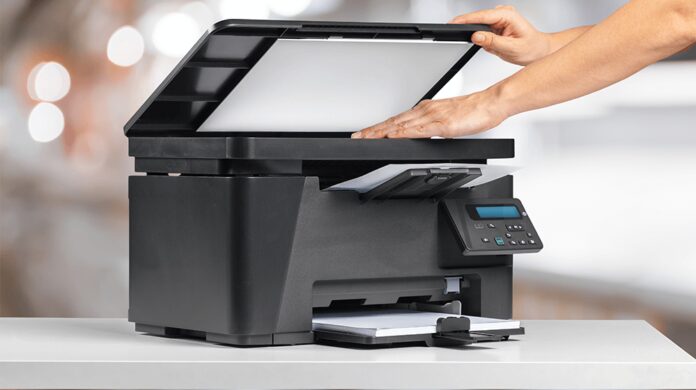
When you hear the word “business” or “company,” you are most likely to create an image of office cubicles, many files and documents to sort out, and a lot of paperwork. A business is nothing without a mountain of paperwork.
As such, managing paper usage is very important, especially in this digital age where everything is stored intangibly. Keeping this in mind, it goes without saying that printing expenses are becoming a troublesome avenue to manage.
The cost of ownership and management of printing services is becoming a financial burden. This is especially true for small and mid-sized companies, and efficiency is thrown out of the window.
About $750 is being spent per employee for just printing paper, and this accounts for 15% of the business expenses. For perspective, businesses undergo many important expenses like postal, repair, and maintenance, which cost about 20% of their expenses. Here are some of the ways you can track your printing expenses and reduce them effectively:
1. Make Use Of An MPS

MPS uses a professional team offering the best printing services for your business. Research has indicated that using an effective MPS could reduce normal operation costs by 30% and contribute to operating cash flow by 5%.
They also offer preventive measures and reduce maintenance costs to a marginal extent. An effective MPS can help you consolidate printing costs and make tracking easier. Maintenance, optimization, and tracking are made easier. To get the best online printing services, read more.
2. Save Documents In PDF File
Research shows that about 67% of the documents are better off saved in soft copies rather than printed on paper. It means that about 765,000 pages of paper can be saved just by saving them in soft copy. Saving them as PDF serves the same function as tangible paper, if not more.
You can save them, share them, write on them digitally, or save them to the cloud for the entire company to access directly. Digital copies have the added benefit of accessibility and environmental friendliness. They can be edited easily, and you can create an infinite number of copies without wasting a piece of paper.
3. Print In Black And White

Ink cartridges are expensive, and there is less incentive to print a document in color rather than black and white. The marginal benefit of printing documents in color is lower than the marginal costs. Color printing takes a lot of time, and time costs electricity and inefficiency.
Color printing is, as a matter of fact, extremely costly. Consider getting your business a monochrome printer, using only the color black and white. That means these printers use only black cartridges, leaving the residual paper in its original color.
Ensure that your employees print their documents, graphs, and tables in black and white unless required. Educate them about how much paper wastage is caused due to ill management. Make monochrome printing a part of the ethos and a benchmark rule.
Other formatting options can also save a significant amount of cartridges and paper. You can also save a huge amount of money by using certain fonts. Make sure all your documents are in Times New Roman, Arial, Century Gothic, or Ecofont. This has proven to reduce costs by about 32%. Margins are major page-wasters. Make sure you change the margin size to 0.75 inches.
4. Put Your Printer To Sleep
Unfortunately, electronic devices can take up much electricity even when not in use. Printers work essentially the same way. To save this wasted energy, it is best to put them to sleep.
Not doing so can weigh you financially and can pose a burden on your electricity bill. Make sure to switch it off and sleep when not in use, such as on holidays or after work hours.
5. Print On Both Sides Of The Paper

A paper comes with both sides and is meant to be used on both sides. Some statistics indicate that using paper on both sides can half the current printing costs. Double-sided printing must be a virtue in the business. A duplex printing setting can use both sides without any manual work.
These printers are automated to take the sheet, flip it around, and put it back. When buying a printer, ensure that it comes with this feature, which can contribute to simplicity.
Make dual printing a default setting, and ensure you let the employees know they must do the same to create a huge environmental impact. Printing on a single side can waste precious paper. However, this is an exception when it comes to ink bleeding printers, which brings you to the next point.
6. Purchase The Correct Printer
Printers have a lot to contribute when it comes to cost reduction. Choosing the right computer needs a list of all the requirements for the device. For example, a high photo-quality printer is as good as the dust on the ground if you don’t print photos in the company. Another example is a printer with fax capabilities. According to GoogleOnlineFax.com, you could let go of this feature and opt instead for email faxing methods.
Hence, your needs and requirements need to be reasonable. Under normal circumstances, opt for inkjet printers over laser ones, as they are cheaper and serve the same purpose. The following sums up the basic features you must look for in a printer:
- Scan
- Duplex Printing
- Fax
- Wifi
- Copy
7. Print In Draft Quality

This feature is a missed opportunity for a greater cause. There are many instances where you need to print paper before you review them for the final copy. Printing them as draft ones can help save time, and with time you can save electricity, and with electricity, you can save costs.
These rough copies help you check for other factors like grammar, spelling, readability, etc. Using draught mode prints your documents in the lowest quality possible, thereby saving a lot of ink, time, energy, and, most importantly, all costs.
8. Opt For The Right Paper
Often, inefficiency is due to not choosing the right paper. Ramming your printer with poor-quality paper can damage the asset and increase costs by reprinting it several times.
Using a proper quality paper may cost you higher, but the marginal benefit certainly exceeds marginal costs. Check with your printing supplier regarding the type of paper to use, and this can save you immensely in the future.
Paper can differ in various factors like color, weight, and covering. The costs vary with the type of paper you use. It is always advisable to have a stock of recycled paper if an employee wants to print something unofficial.
9. Reduce Print Density

Reducing the density is the best way to reduce dependency on ink cartridges. The impact created on your document is not material. Although your documents are much lighter, using this method regularly can reduce costs while the printer does the job.
Conclusion
Companies spend a portion of their income on copying, whether internal usage, sending documents to customers, or delivering mass mailings to the market. If you carefully examine your company’s financial statements, you’ll see that printing expenses substantially impact your overall spending plan.
Plus, it’s a waste of money if you don’t do it correctly. Your business is probably spending more on printing than is necessary. But you may significantly cut printing costs by implementing a few straightforward but efficient ideas.











